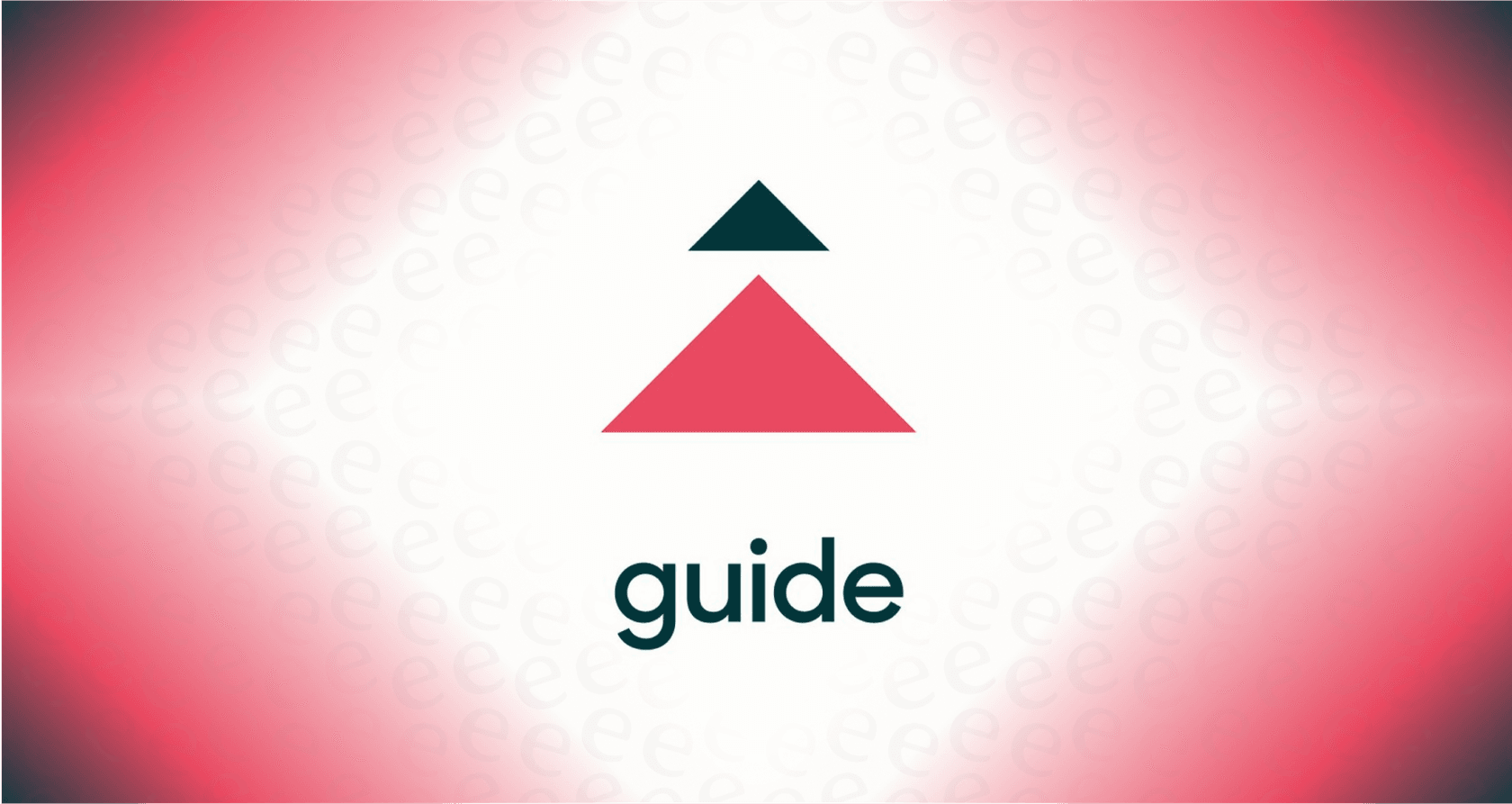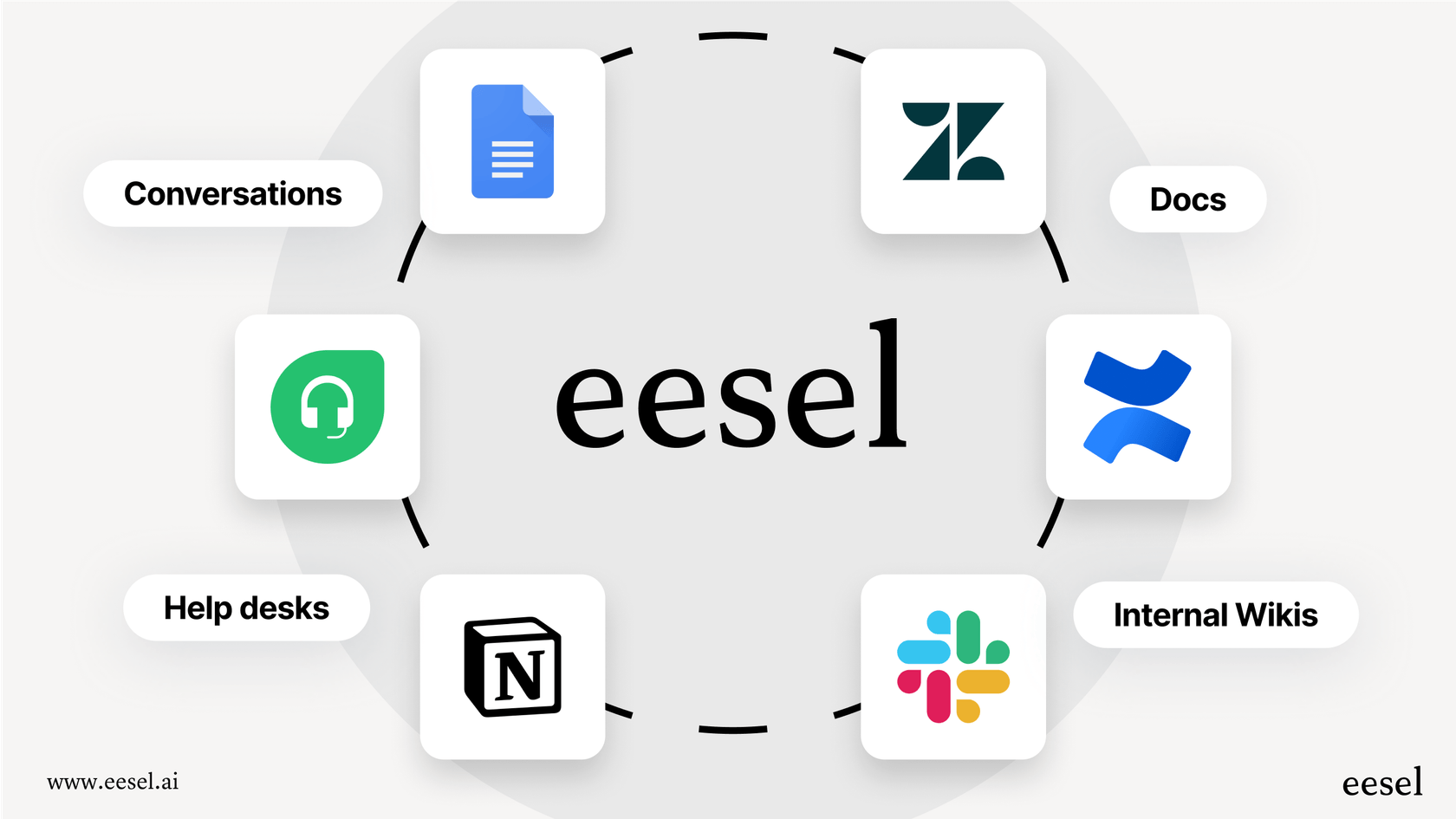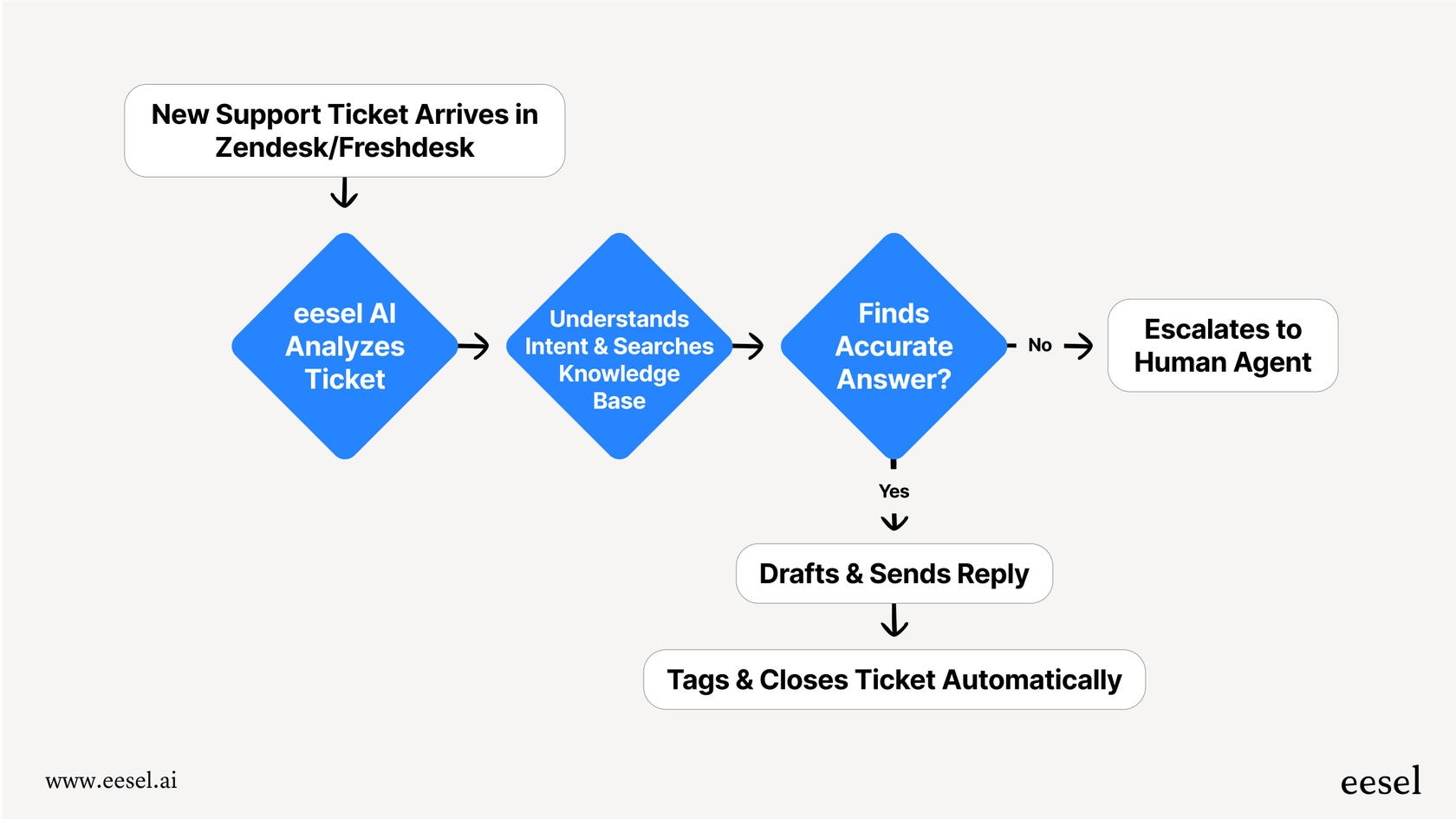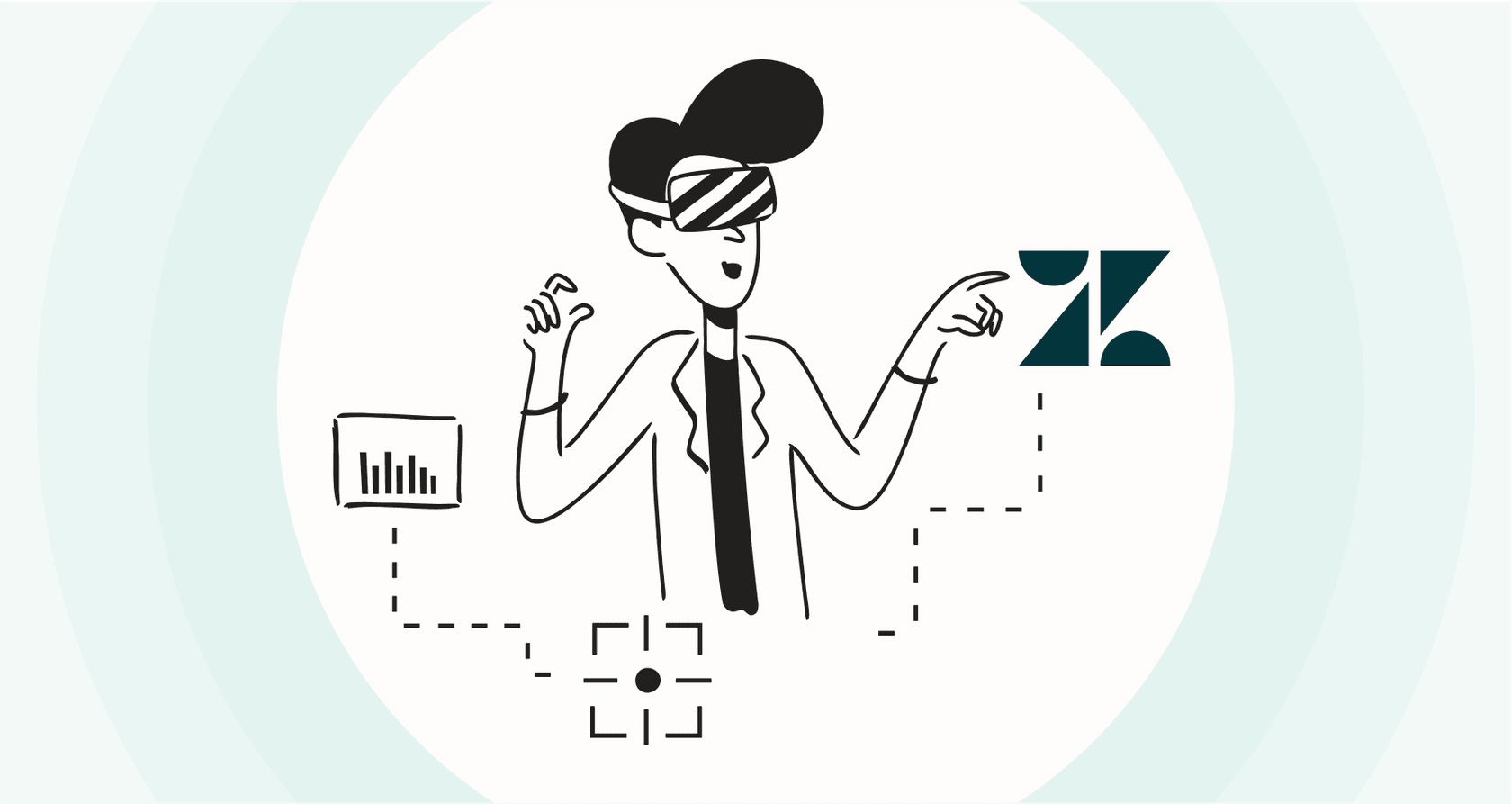Zendesk support pricing explained in 2025: A complete breakdown

Stevia Putri

Amogh Sarda
Last edited October 6, 2025
Expert Verified

Let's be real for a second: figuring out Zendesk's pricing can be a headache. You’ve got different plans, per-agent costs that add up fast, and a whole menu of add-ons. It’s almost impossible to guess what your final bill will actually be. One moment you think you’ve found the right plan, and the next you find out a feature you need costs extra.
That’s exactly why we put this guide together. We're going to walk through Zendesk support pricing explained in 2025, plain and simple. We’ll break down the Support and Suite plans, point out the costs that aren't so obvious, and help you understand what you're really getting for your money.
With AI becoming a non-negotiable part of customer support, making the right choice is a big deal. The right platform can pay for itself, while the wrong one can leave you with a surprisingly high bill. Let’s jump in and make sense of it all.
What is Zendesk?
You've almost certainly heard the name Zendesk. They're one of the biggest players in the customer service software game. At its heart, Zendesk is a platform built to help businesses manage all their customer conversations in one spot. Think of it as the mission control for your support team.
Its main purpose is to take all the customer questions coming in from email, chat, phone, and social media and turn them into neat, organized "tickets." This ticketing system helps teams track, manage, and solve customer problems without anything getting lost in the shuffle. The whole idea is to streamline the chaos so your team can deliver faster, more consistent help.
 A screenshot of the Zendesk Agent Workspace, which helps in understanding Zendesk support pricing explained in 2025.
A screenshot of the Zendesk Agent Workspace, which helps in understanding Zendesk support pricing explained in 2025.Zendesk support pricing: A full breakdown of plans
When you're looking at Zendesk, your first big choice is whether you need a basic ticketing system or an all-in-one package. Zendesk splits its plans into two main groups: Zendesk Support and Zendesk Suite. Each of those has its own set of tiers. Let's dig into what you get with each one.
Support plans
These are the foundational plans. They focus on the core ticketing system for handling requests from email and social media. If you're just starting to build out a formal support process, this is a pretty common place to begin.
| Plan | Price (Billed Annually) | Price (Billed Monthly) | Key Features | Best For |
|---|---|---|---|---|
| Support Team | $19 per agent/month | $25 per agent/month | Email, X, and Facebook ticketing; custom business rules; basic reporting; access to pre-built integrations. | Small teams that are just getting started with a proper ticketing system. |
| Support Professional | $55 per agent/month | $69 per agent/month | Everything in Team, plus multilingual support, business hours, CSAT surveys, and Service Level Agreements (SLAs). | Growing teams that need to track performance and customer satisfaction more seriously. |
| Support Enterprise | $115 per agent/month | $149 per agent/month | Everything in Professional, plus skills-based routing, custom agent roles, contextual workspaces, and a sandbox for testing. | Larger companies with complex workflows or multiple brands to manage. |
Suite plans
The Suite plans are where Zendesk bundles everything together: Support (ticketing), Guide (help center), Chat, and Talk (phone). This is for teams who want to offer a seamless experience across every channel. It's also where you start to see more of Zendesk's own AI features.
| Plan | Price (Billed Annually) | Price (Billed Monthly) | Key Features | Best For |
|---|---|---|---|---|
| Suite Team | $55 per agent/month | $69 per agent/month | Ticketing, messaging, chat, voice, social channels; one help center; basic AI agents and generative replies. | Teams that need to be available on more channels than just email. |
| Suite Growth | $89 per agent/month | $115 per agent/month | Everything in Team, plus a self-service customer portal, multiple ticket forms, multilingual support, and SLAs. | Companies trying to scale up their self-service options and work more efficiently. |
| Suite Professional | $115 per agent/month | $149 per agent/month | Everything in Growth, plus integrated community forums, HIPAA compliance, skills-based routing, and advanced analytics. | Mid-sized and larger businesses that need more customization and data insights. |
| Suite Enterprise | $169 per agent/month | $219 per agent/month | Everything in Professional, plus custom agent roles, a sandbox, advanced AI with content cues, and dynamic workspaces. | Big companies that need top-tier security, change management, and AI-powered personalization. |
The hidden costs of Zendesk support pricing
The per-agent price is just the starting point. The actual amount you'll end up paying for Zendesk can be a lot higher than what you see on the sticker. There are a few things that can inflate your monthly bill, and it’s good to know about them before you sign on the dotted line.
The per-agent trap
Here’s the fundamental problem with the per-agent model: your bill grows every time your team does. Say you have 10 agents on the Suite Professional plan. That’s $1,150 a month. If business is good and you hire 10 more people, your bill instantly doubles to $2,300 a month. You’re essentially penalized for growing your team.
This is where more modern pricing models really shine. For example, a platform like eesel AI has predictable pricing based on how much the AI helps, not how many humans are on your team. That means you can expand your support staff without bracing for a huge jump in your software costs.
Expensive AI add-ons
This one is a big deal. If you want to unlock Zendesk’s most powerful AI capabilities, you have to buy the "Advanced AI" add-on. And it costs an extra $50 per agent, per month.
Features like smart ticket triage and agent assistance tools (what they call Copilot) are locked behind this paywall, even on their top-tier plans. This puts you in a tough spot: either pay a massive premium for every single agent to get the best AI, or make do with the basic version. It makes truly useful AI feel out of reach for a lot of teams.
 A look at Zendesk's AI-generated ticket summary, a feature to consider when examining Zendesk support pricing explained in 2025.
A look at Zendesk's AI-generated ticket summary, a feature to consider when examining Zendesk support pricing explained in 2025.Setup and connection costs
Zendesk is a capable tool, but getting it to match your team’s specific workflow isn't always straightforward. Customizing it can get complicated, sometimes to the point where you need to hire a consultant or pay for their professional services.
Even more importantly, its native AI is stuck inside a bubble. It can only learn from information that already exists within your Zendesk account. But what if your most current answers are scattered across Confluence, Google Docs, or Notion? Zendesk's AI can't access any of it.
This is where a tool like eesel AI really makes a difference. It’s built to be self-serve, so you can get it up and running in minutes, not months. It plugs straight into your Zendesk account and connects to over 100 other knowledge sources right away, no painful data migration required.
A smarter way to add AI
Instead of paying a premium for AI add-ons that are walled off from the rest of your company's knowledge, there's a better way. You can integrate a specialized AI layer that works with the helpdesk you already use. This gives you more power, better control, and clearer insights without the hefty price tag.
Unifying knowledge
The biggest weakness of Zendesk's built-in AI is that it only learns from what's inside Zendesk. But your company's actual knowledge base is probably spread all over the place.
The advantage of eesel AI is that it instantly connects all those scattered sources. It learns from your past tickets and macros, sure, but it also pulls knowledge from your wikis in Confluence, your internal guides in Google Docs, and your product docs in Notion. This gives your AI the full picture, so it can provide answers that are both accurate and complete.
 An infographic showing how eesel AI unifies knowledge from multiple sources, a key aspect when Zendesk support pricing explained in 2025 is considered.
An infographic showing how eesel AI unifies knowledge from multiple sources, a key aspect when Zendesk support pricing explained in 2025 is considered.Testing with confidence
Rolling out a new AI tool can feel like a gamble. Will it actually work? How many tickets will it really resolve? Zendesk doesn't really give you a way to answer those questions before you launch.
That’s what eesel AI's simulation mode is for. You can test your AI setup on thousands of your own past Zendesk tickets to see exactly how it would have performed. You get clear forecasts on resolution rates and cost savings before a single customer ever talks to it. It takes all the guesswork out of the process, so you can automate with total confidence.
 The eesel AI simulation mode provides clear forecasts, a crucial feature when analyzing Zendesk support pricing explained in 2025.
The eesel AI simulation mode provides clear forecasts, a crucial feature when analyzing Zendesk support pricing explained in 2025.Total control over automation
Native AI tools can sometimes feel like a "black box." You switch them on, and they just sort of... do their thing. You don't get much say in what tickets they handle or how they respond.
With eesel AI's fully customizable workflow engine, you're in charge. You can set up specific rules to decide which tickets the AI should handle (like only password resets or "how-to" questions). You can also tell it exactly what it's allowed to do, whether that’s tagging a ticket, looking up an order in Shopify, or sending a ticket to a specific agent. That blend of power and fine-tuned control just isn't possible with standard add-ons.
 A workflow showing eesel AI's support automation, an important consideration for anyone reviewing Zendesk support pricing explained in 2025.
A workflow showing eesel AI's support automation, an important consideration for anyone reviewing Zendesk support pricing explained in 2025.Look beyond the list price
Zendesk is a solid platform, there's no doubt about it. But its pricing is complicated. The true cost is often buried in the per-agent scaling model, expensive AI add-ons, and knowledge silos that hold its AI back.
To get the most out of your investment in Zendesk in 2025, you need to think beyond its built-in features, especially when it comes to AI.
The smartest move is often to keep the helpdesk your team already knows, but supercharge it with an integrated AI layer that’s more powerful, more controllable, and won't drain your budget. You get the best of both worlds without breaking the bank.
This video provides a deep dive into Zendesk's performance and pricing structures to give you a complete picture.
CTA: Ready to see how much you could automate? Connect your Zendesk account to eesel AI and run a free simulation on your past tickets. You can see your potential resolution rate and ROI in minutes, not months.
Frequently asked questions
The Support plans primarily offer a core ticketing system for email and social media. Suite plans bundle everything, including ticketing, chat, voice, help center, and basic AI, providing an all-in-one solution for omnichannel support.
Key hidden costs include the escalating per-agent fees as your team grows, the expensive "Advanced AI" add-on at an extra $50 per agent, and potential setup or customization costs if workflows are complex.
Basic AI is included in Suite plans, but advanced features like smart ticket triage require an additional $50 per agent/month add-on. A significant limitation is that Zendesk's native AI only learns from data within its own system, ignoring external knowledge sources.
The per-agent model means your software costs increase directly with your team size, effectively penalizing growth. Platforms with predictable pricing based on AI usage, rather than headcount, can offer more cost-effective scalability.
Yes, you can integrate external AI layers like eesel AI directly with your Zendesk account. This can offer more powerful AI, unify knowledge from across your company, and often provides a more predictable and cost-effective pricing model compared to Zendesk's native AI add-ons.
The smartest strategy is often to maintain your current Zendesk helpdesk and augment it with a specialized, integrated AI layer. This allows you to gain more powerful, controllable AI capabilities without the high per-agent cost and knowledge silos of Zendesk's advanced add-ons.





